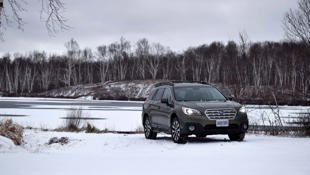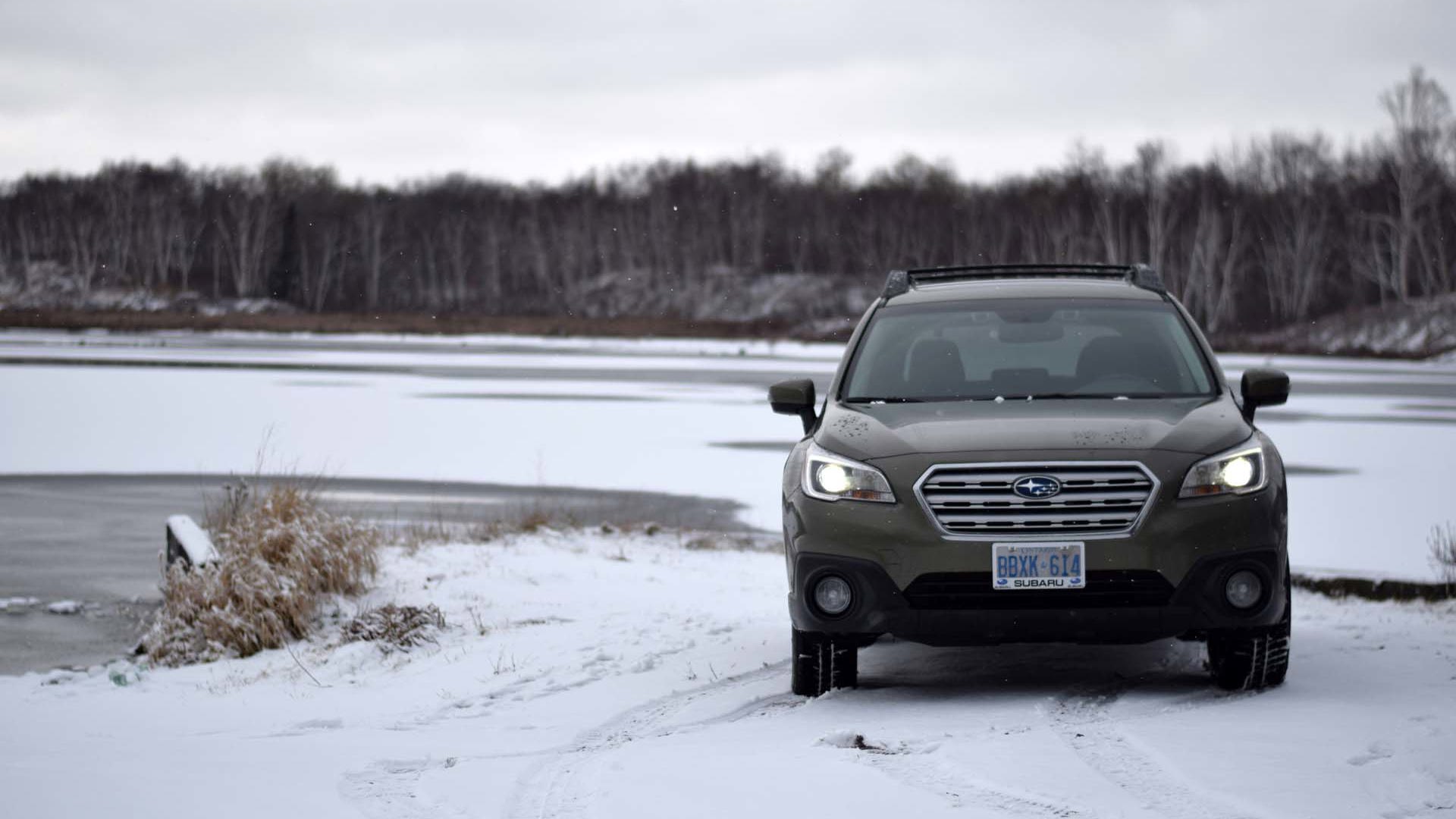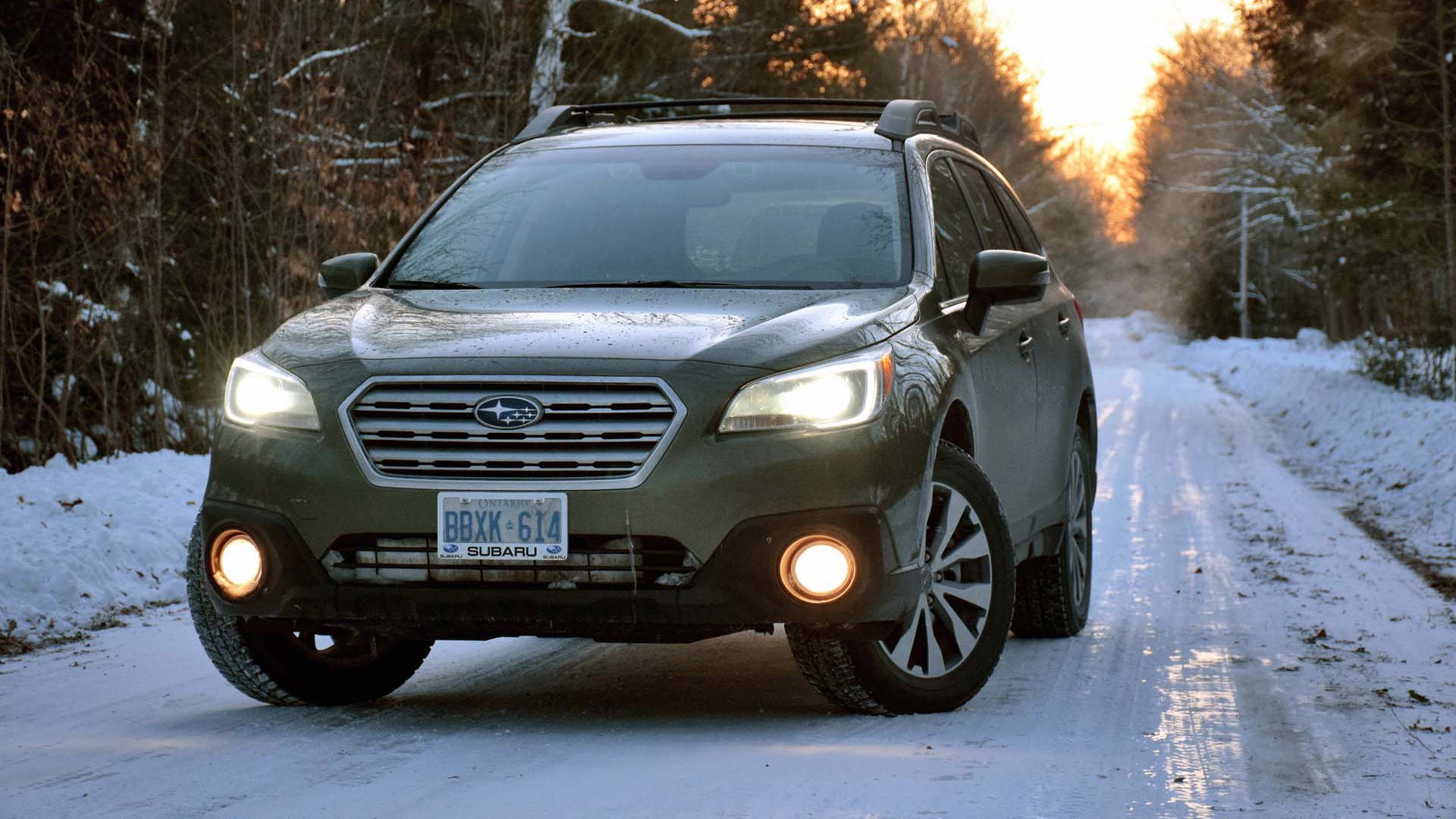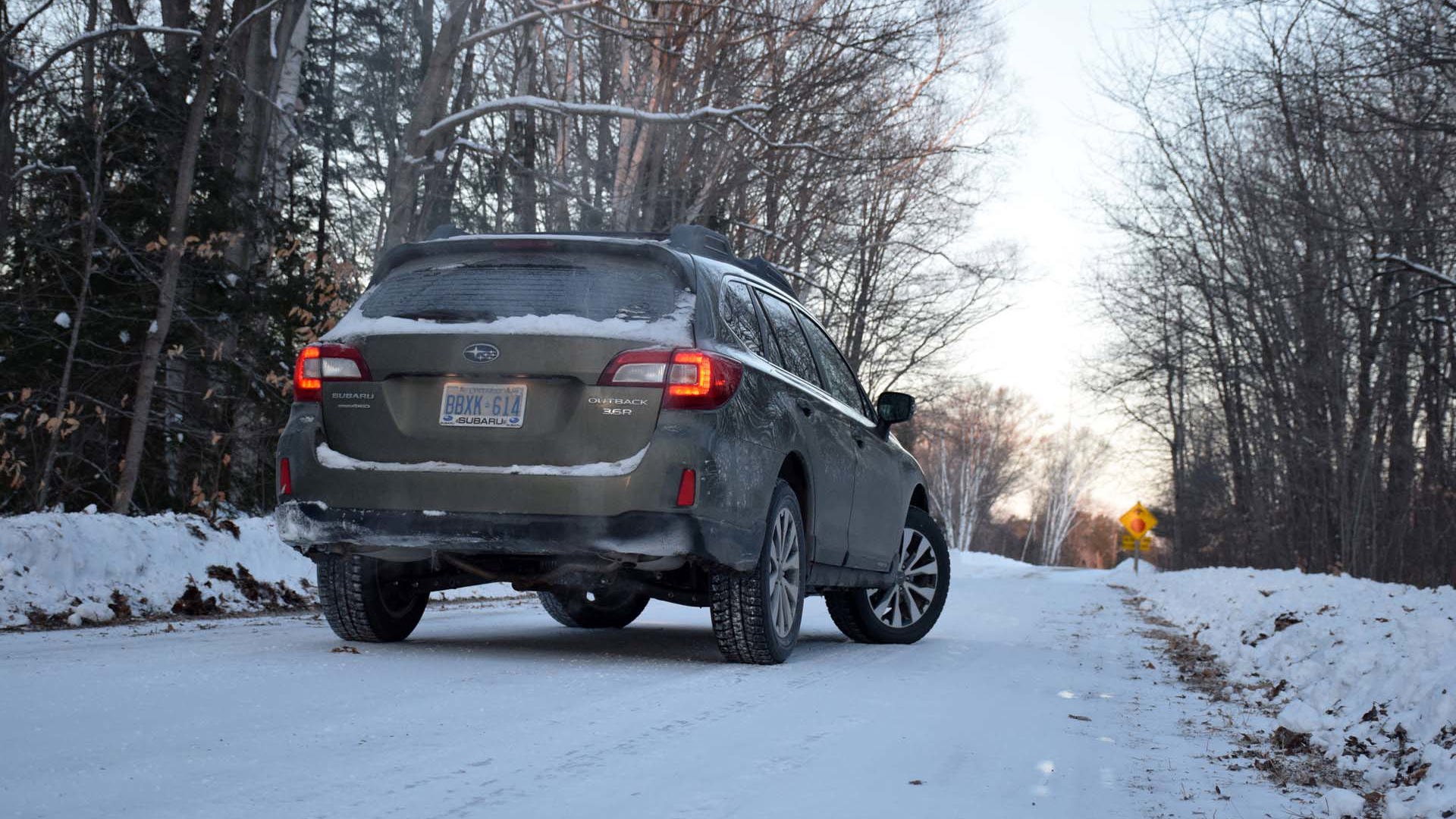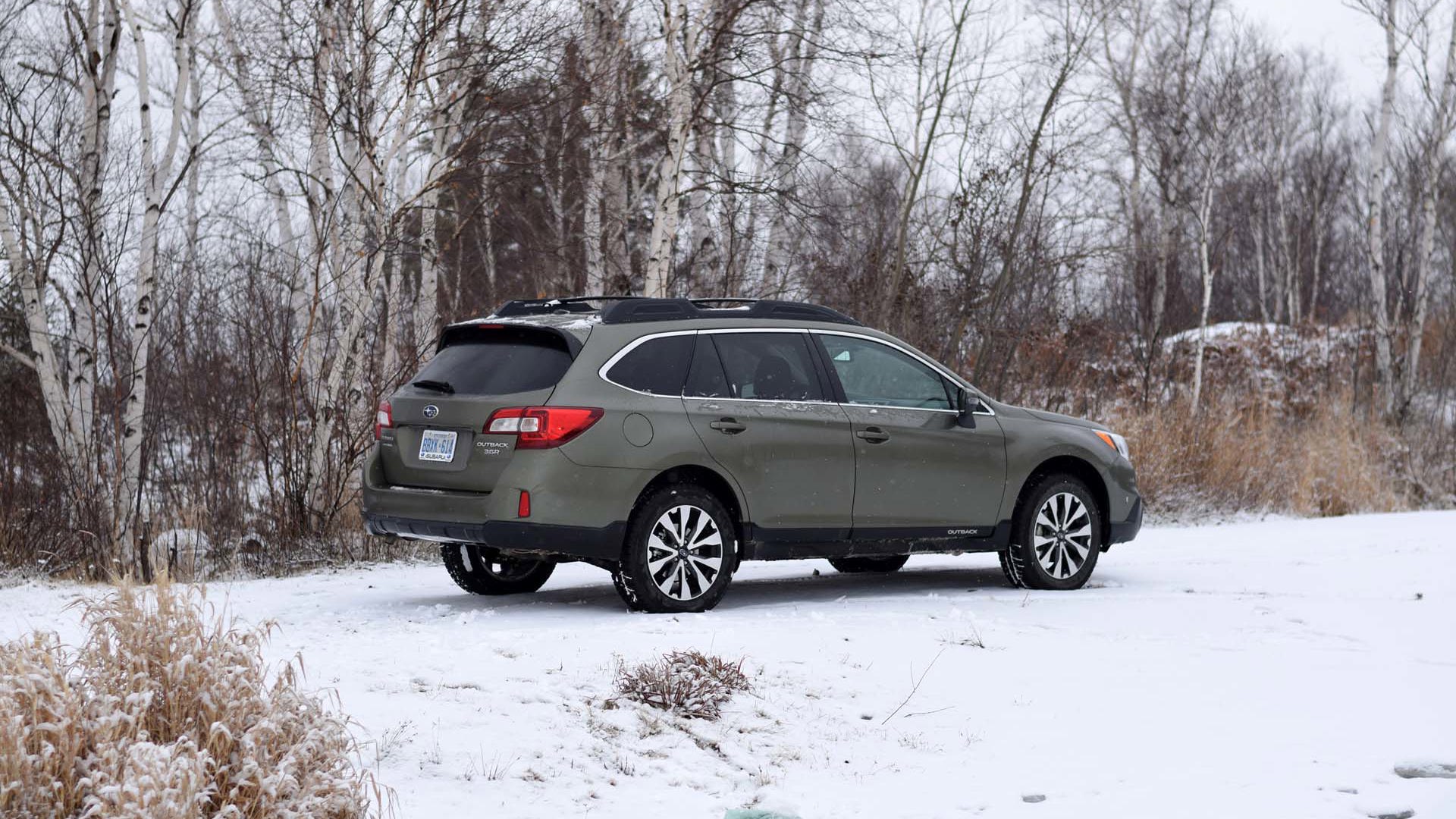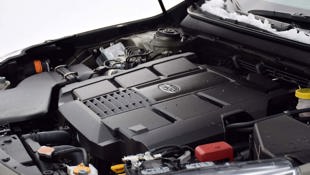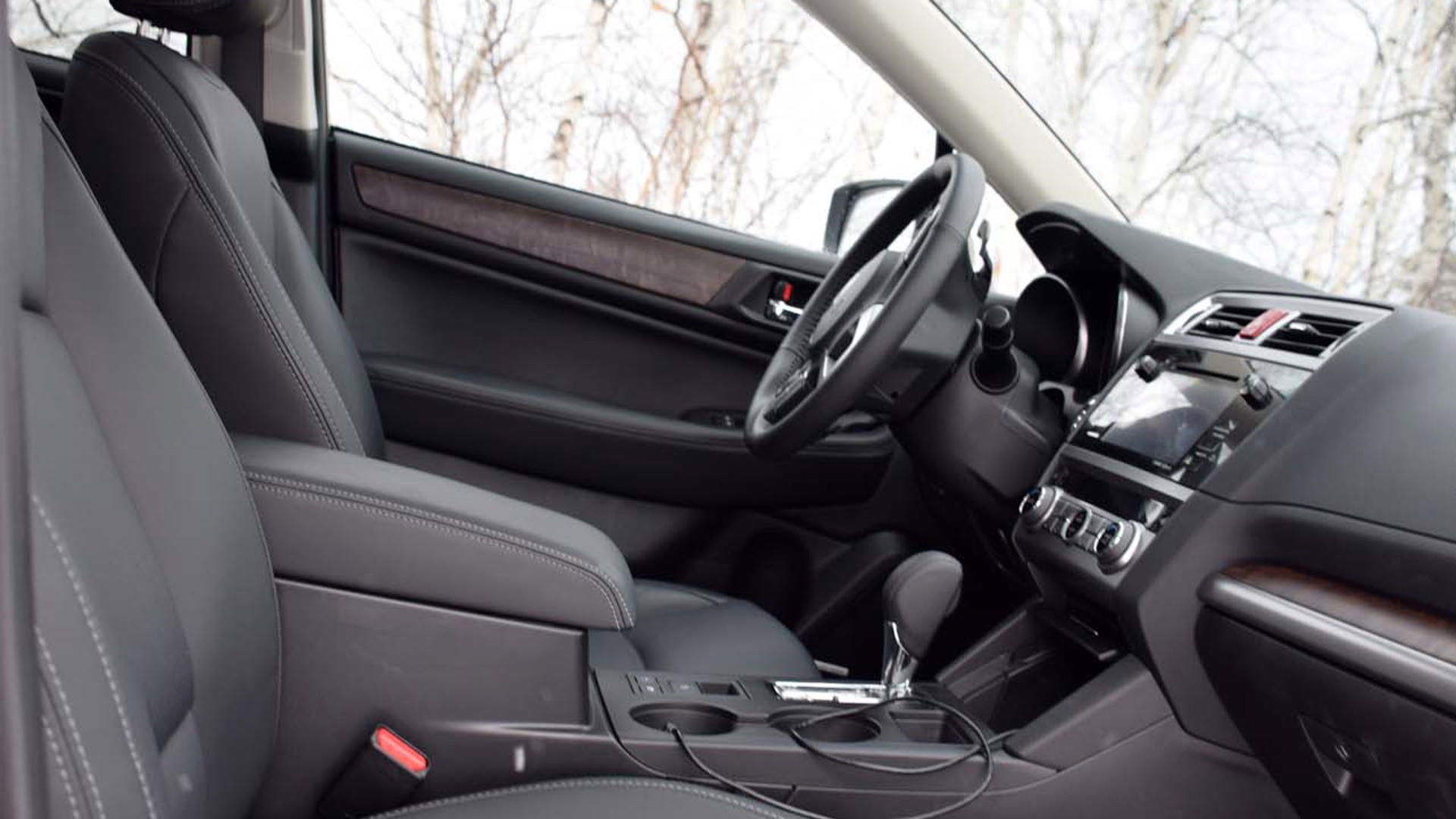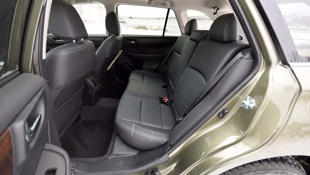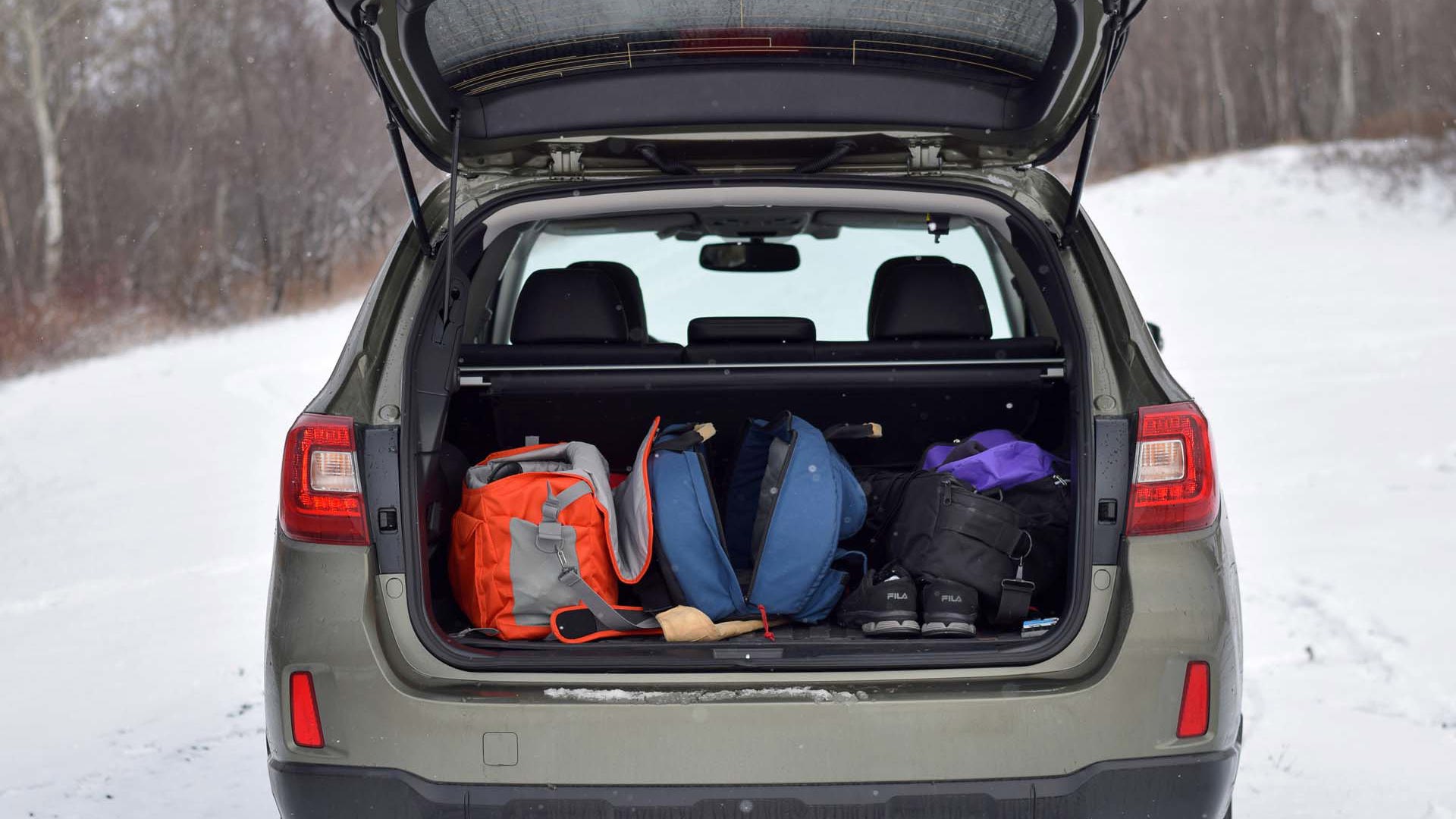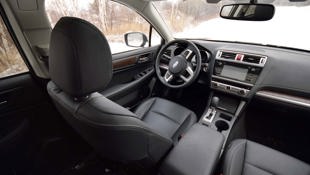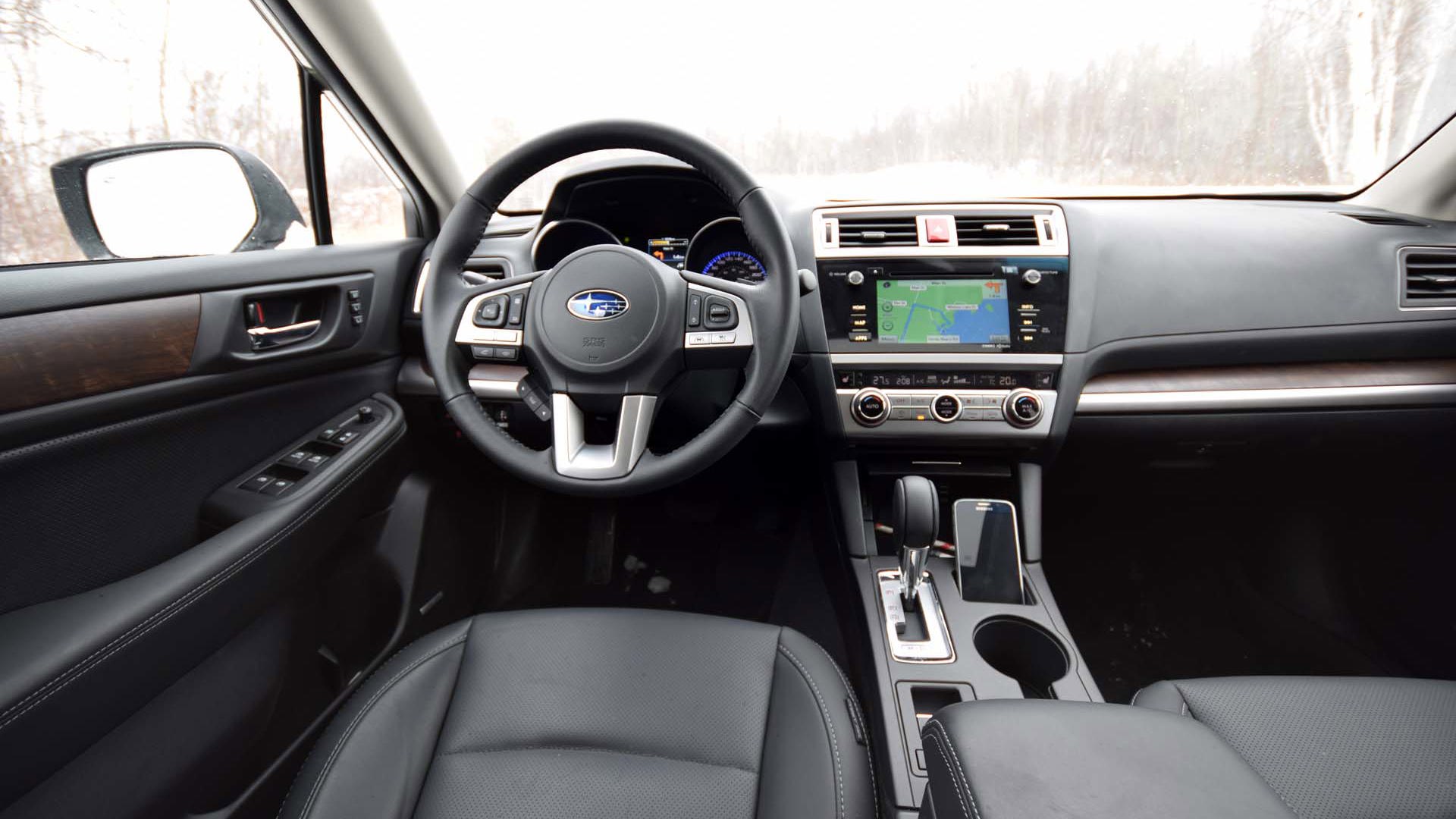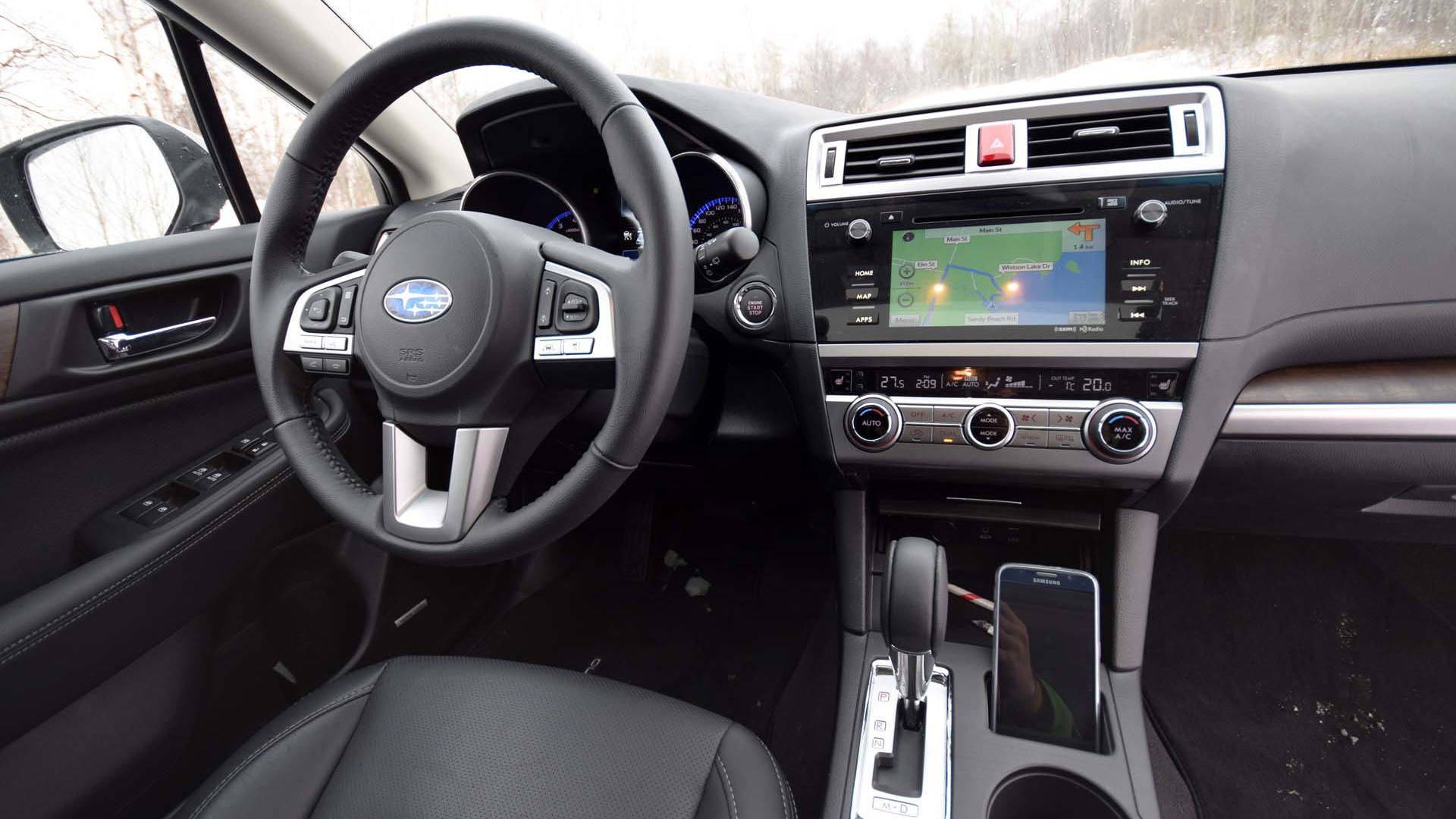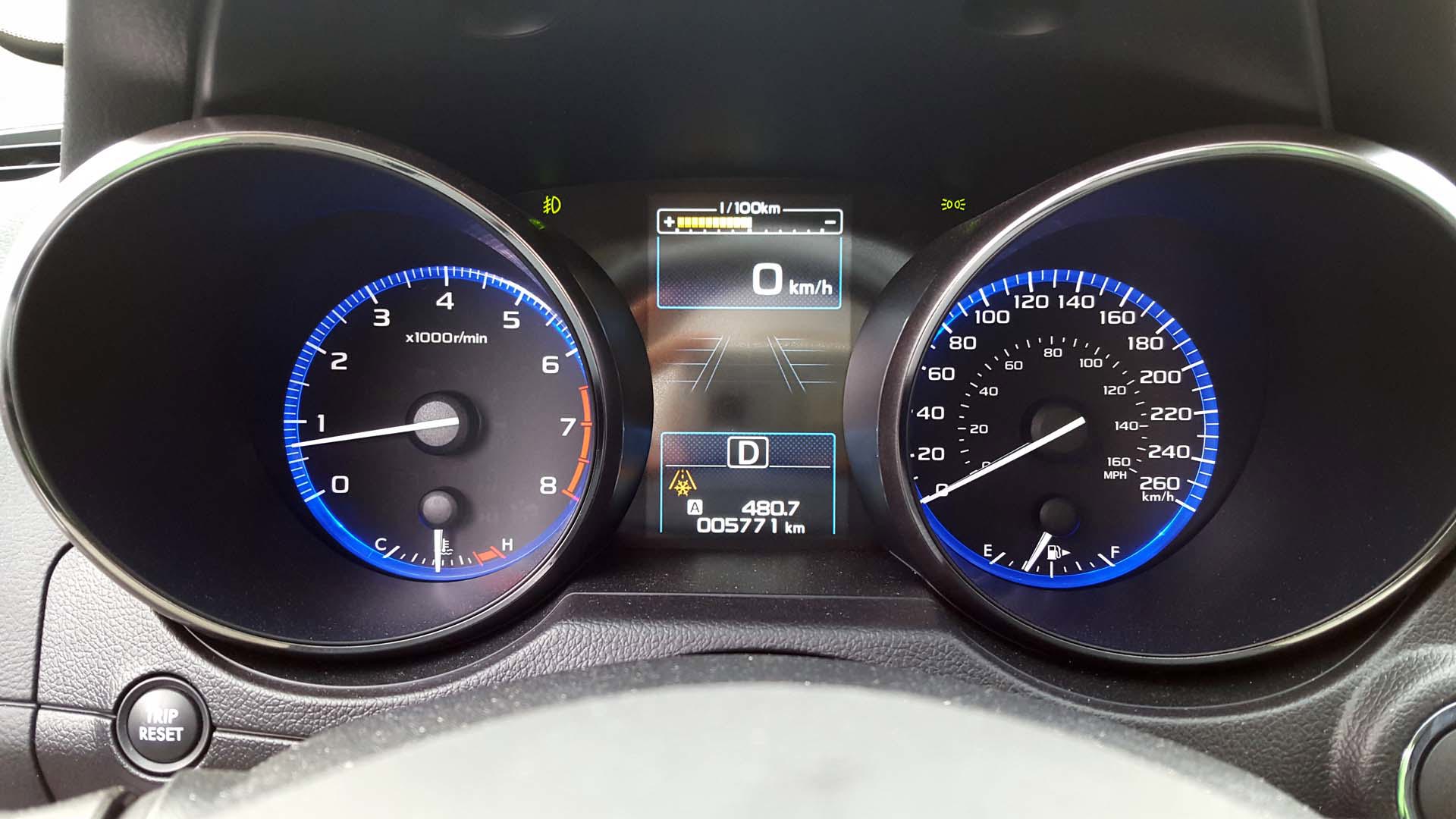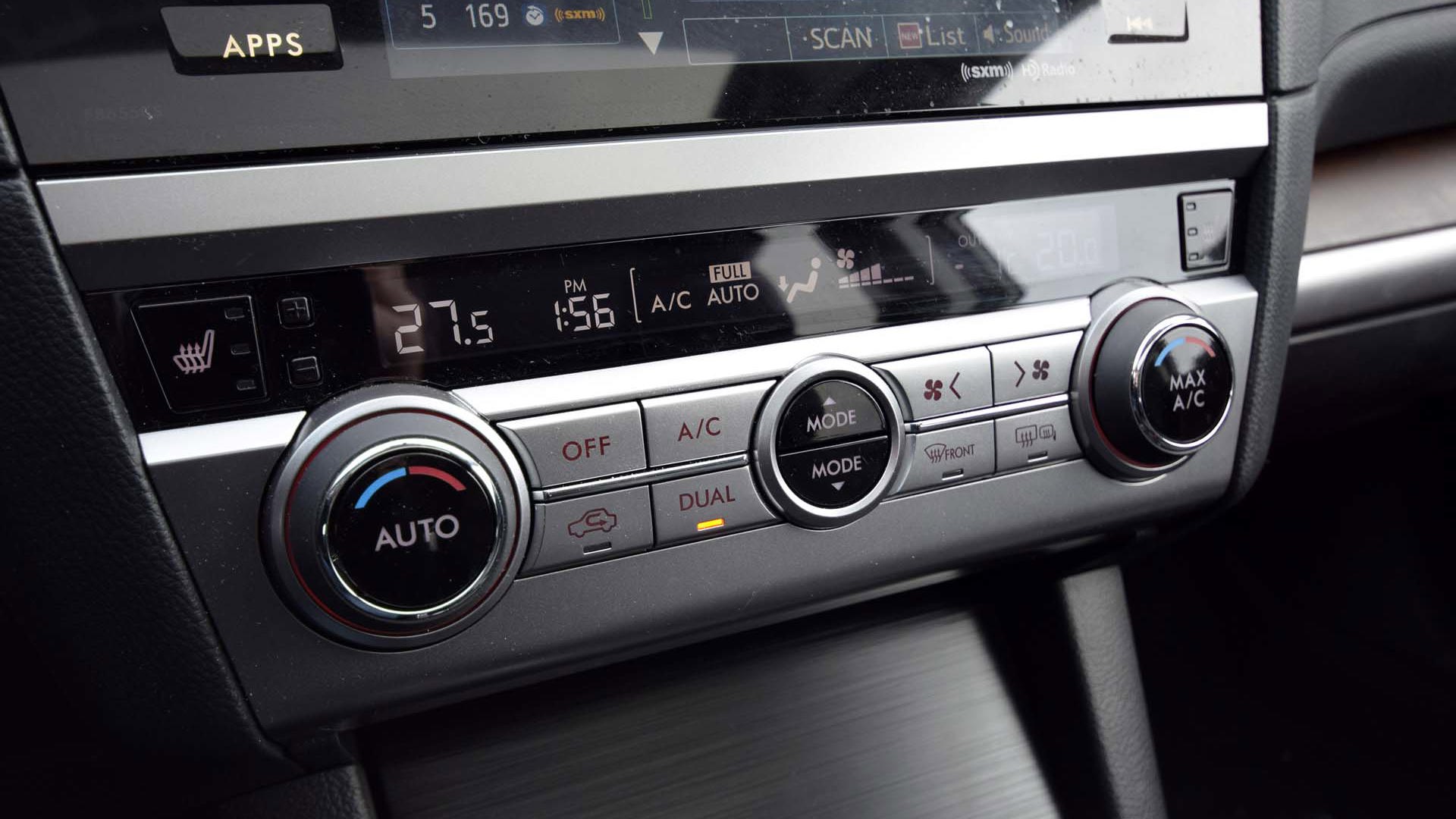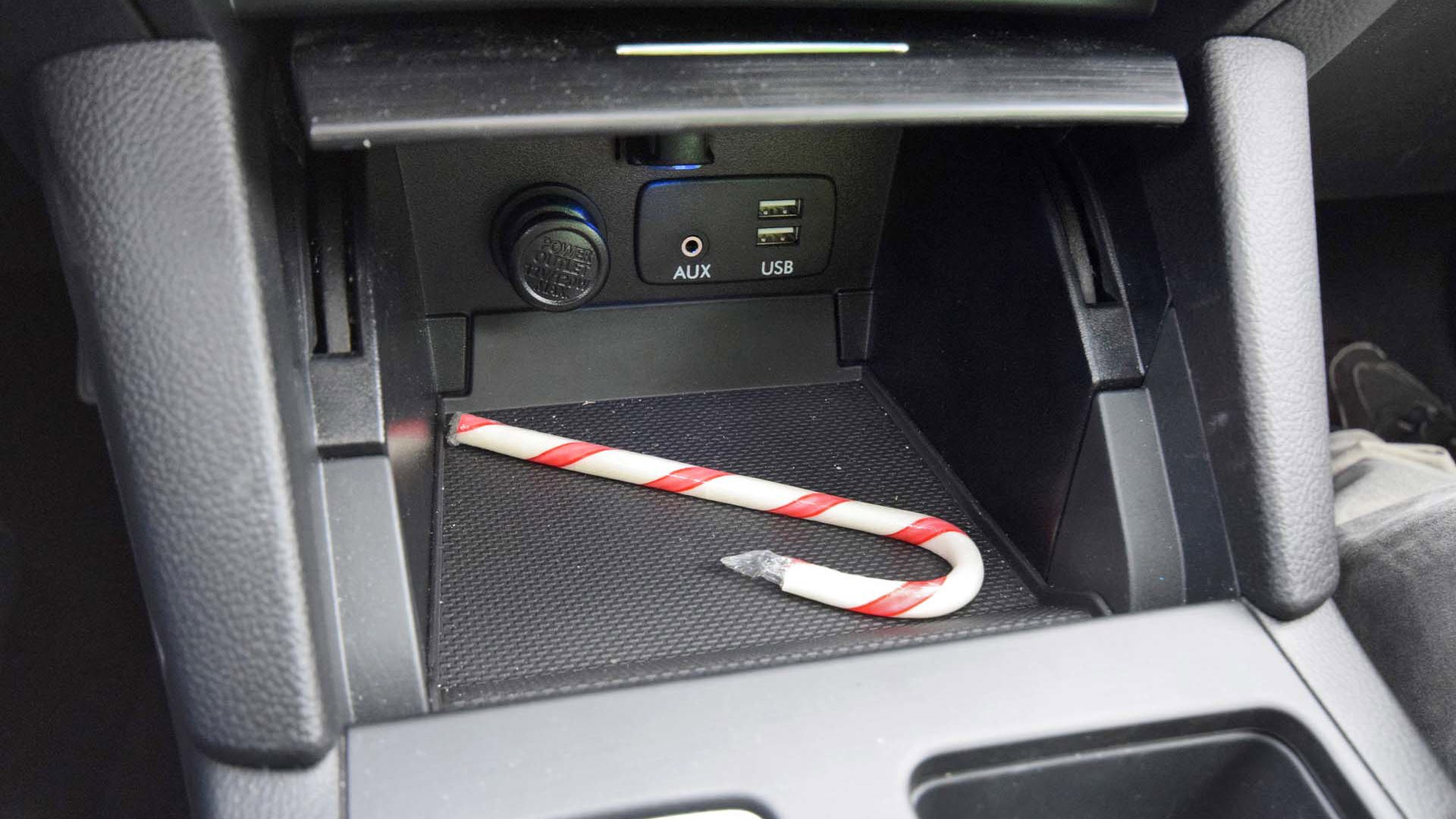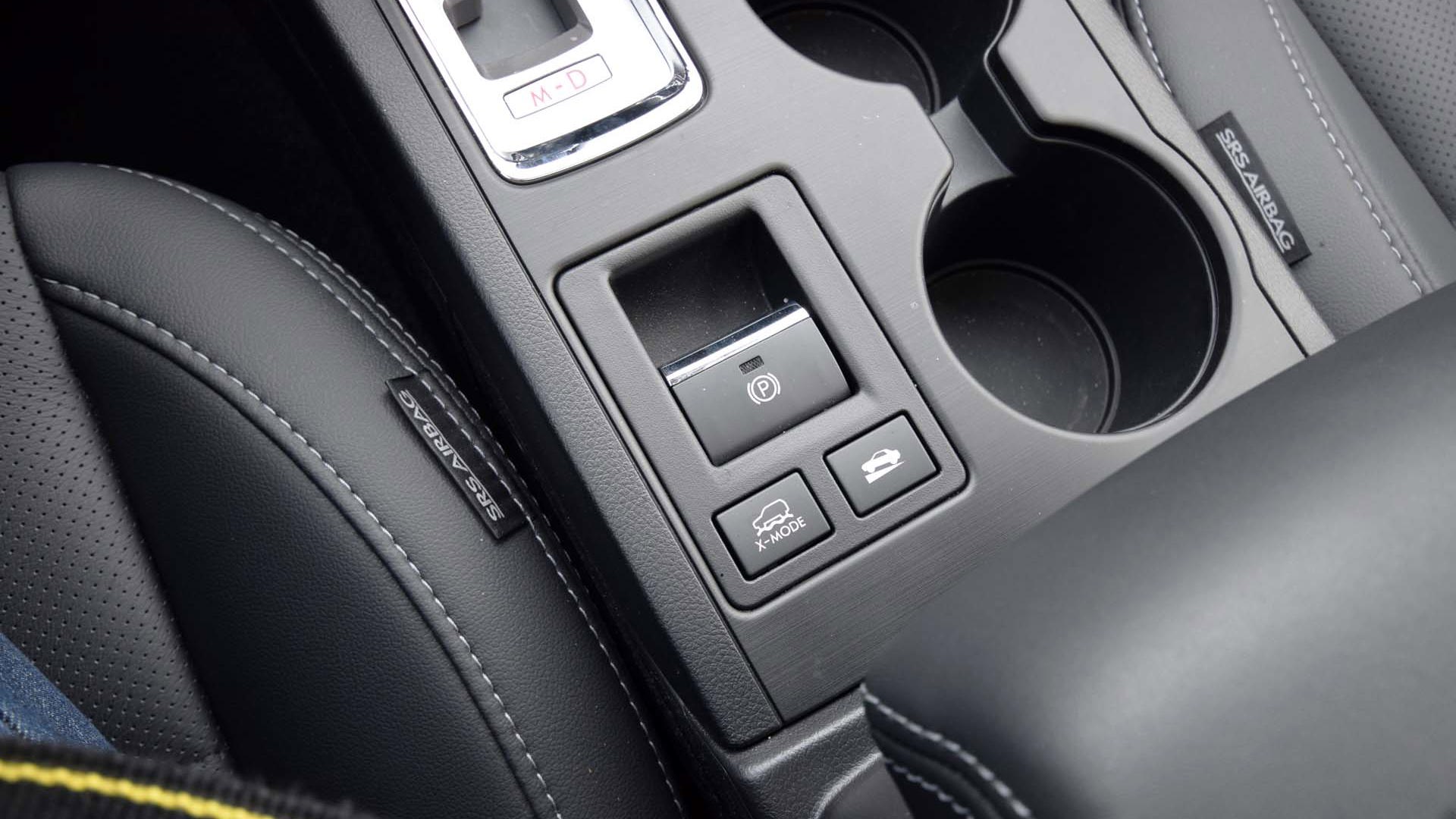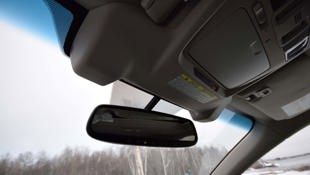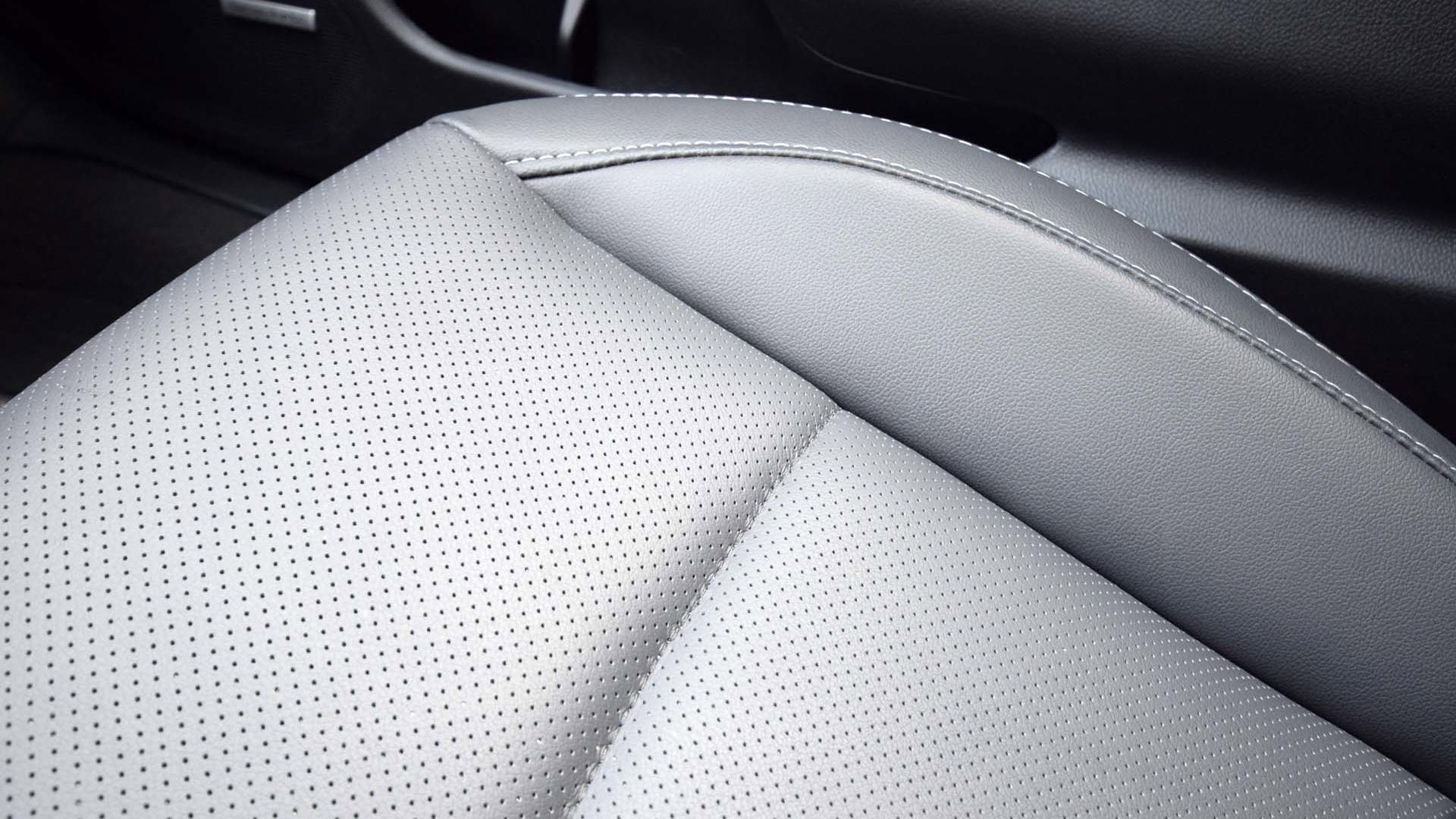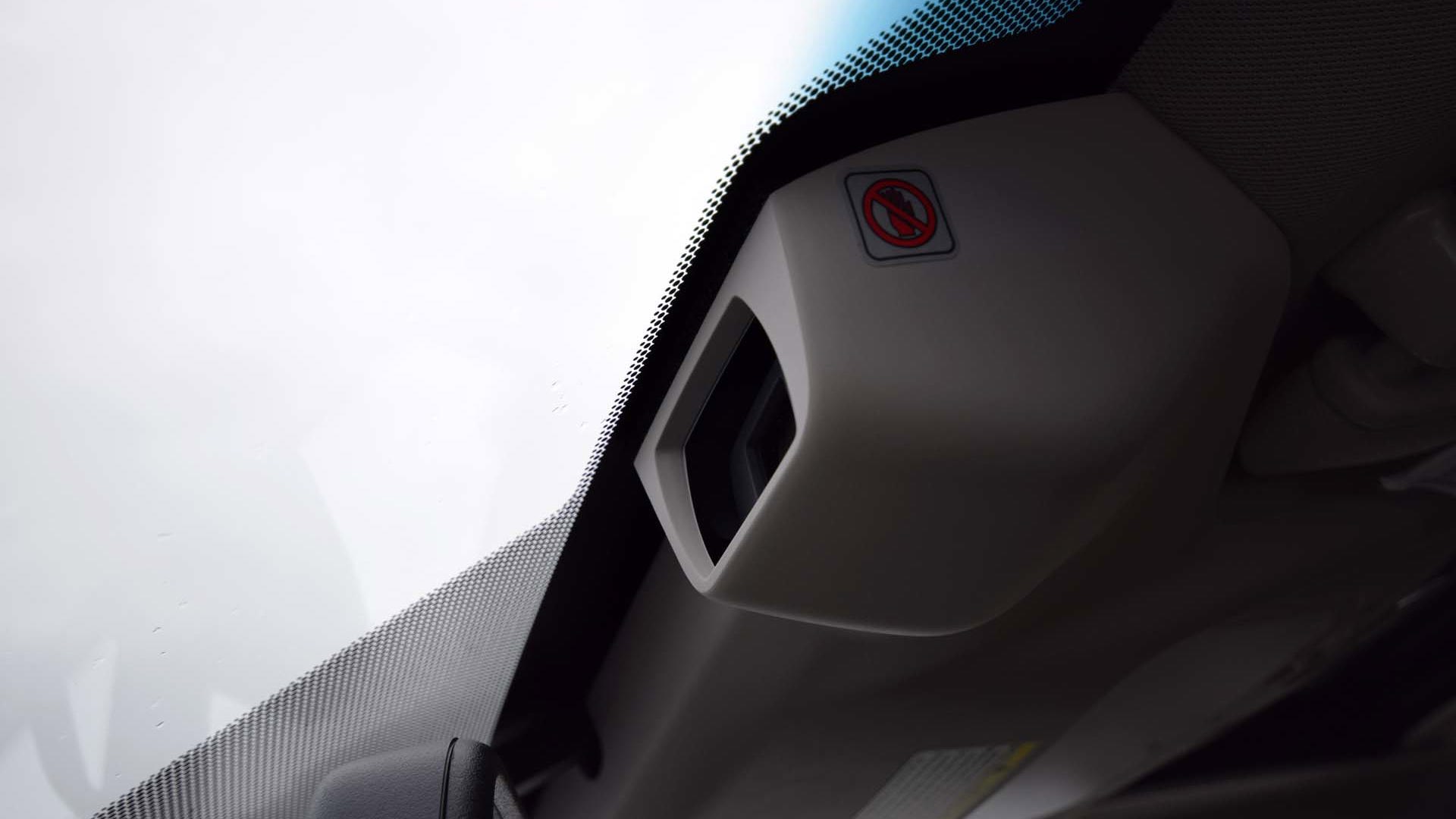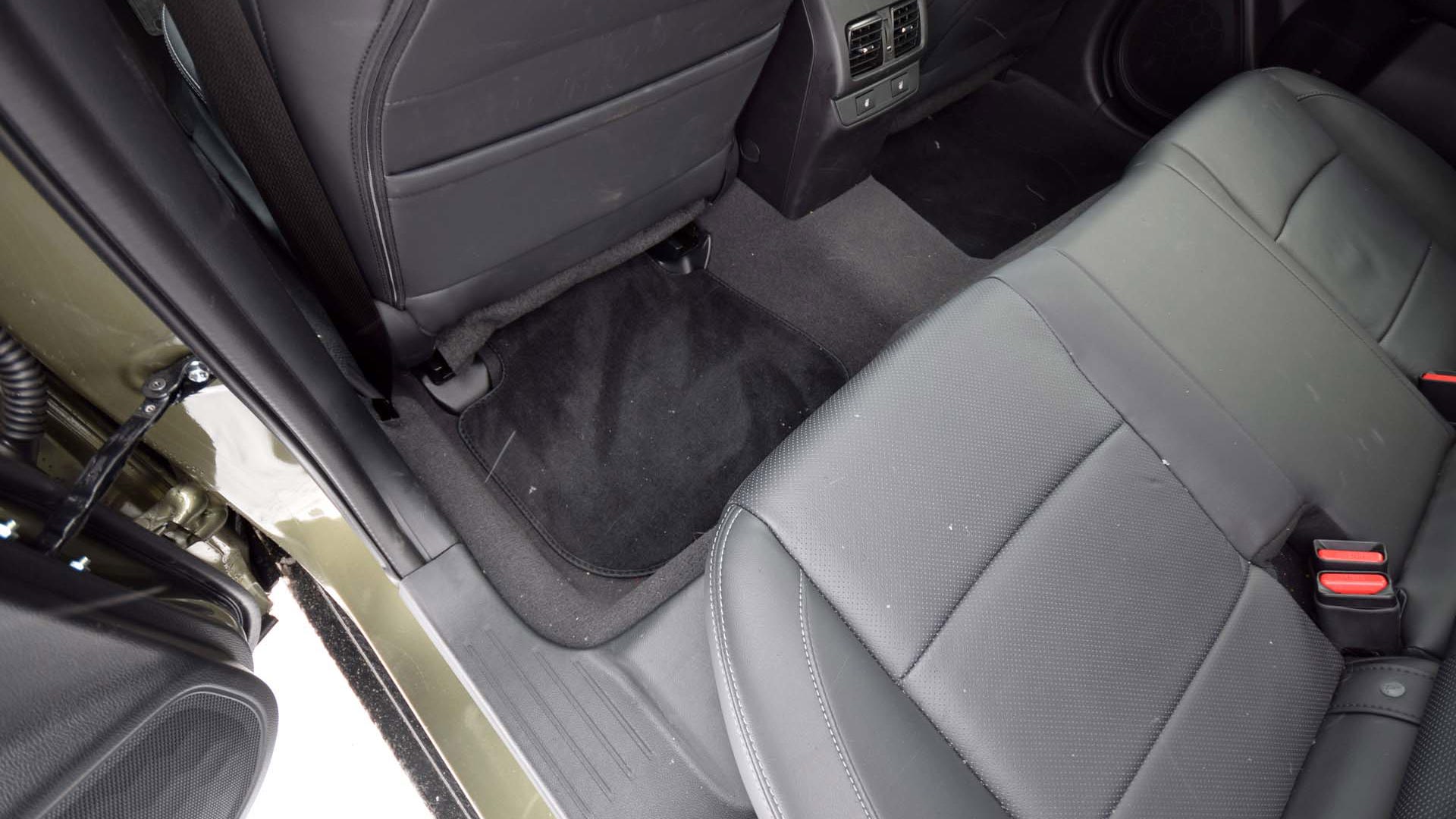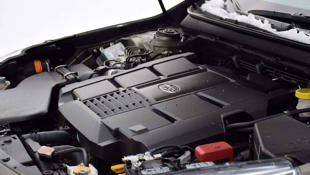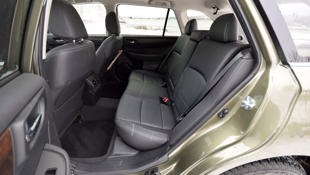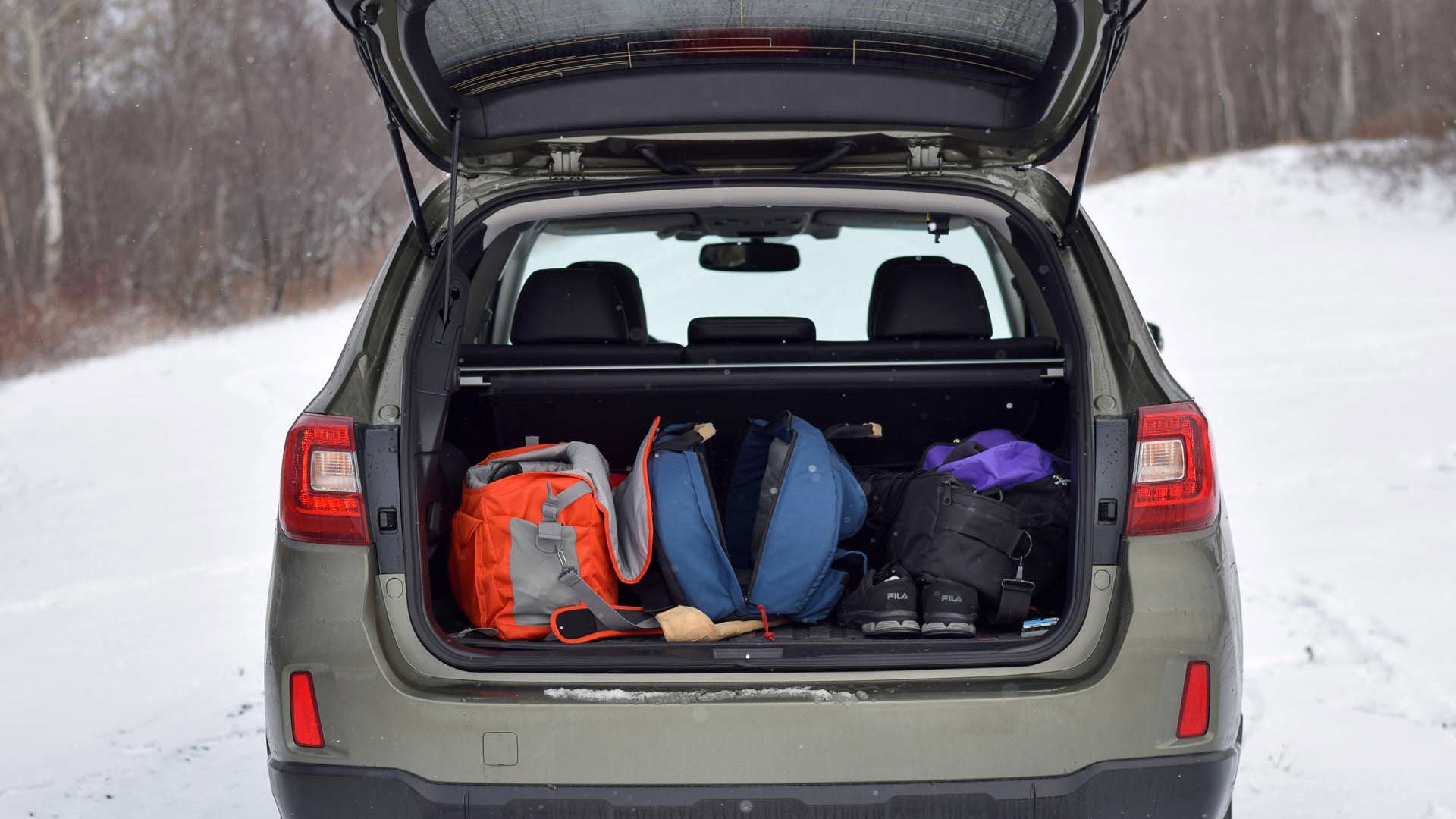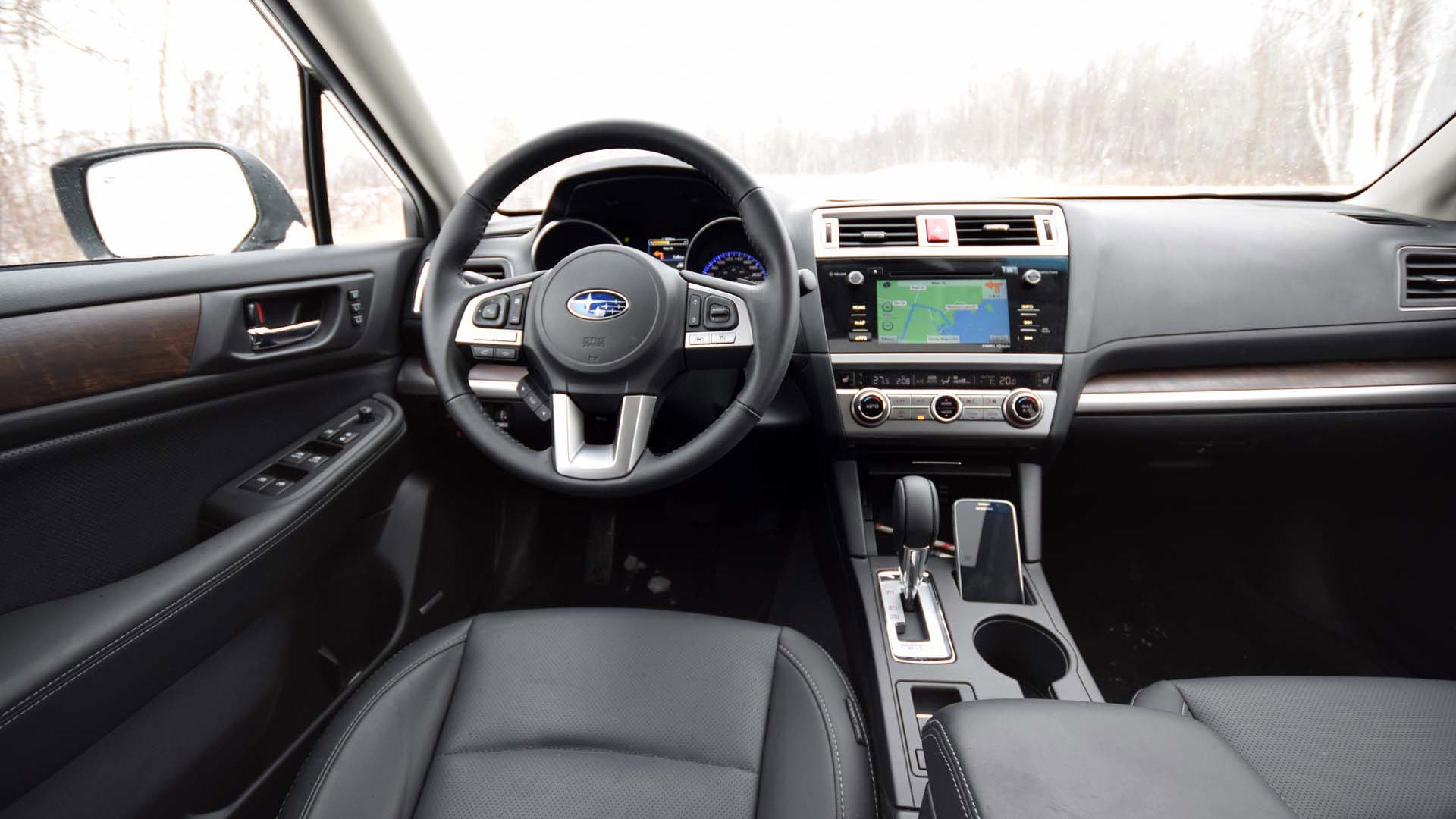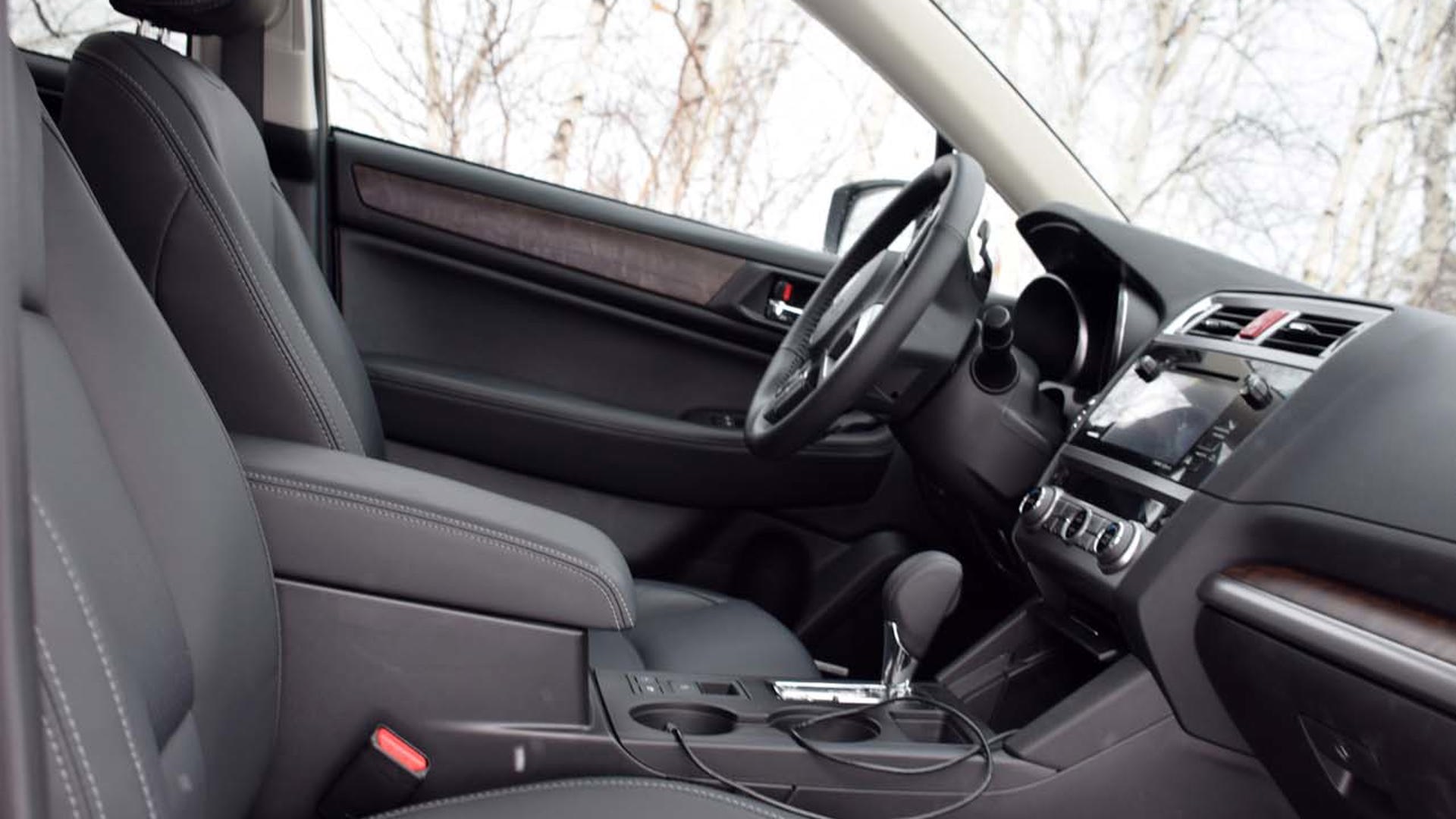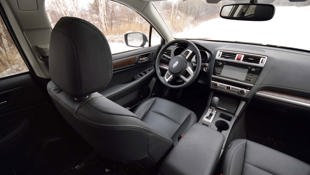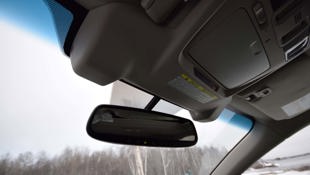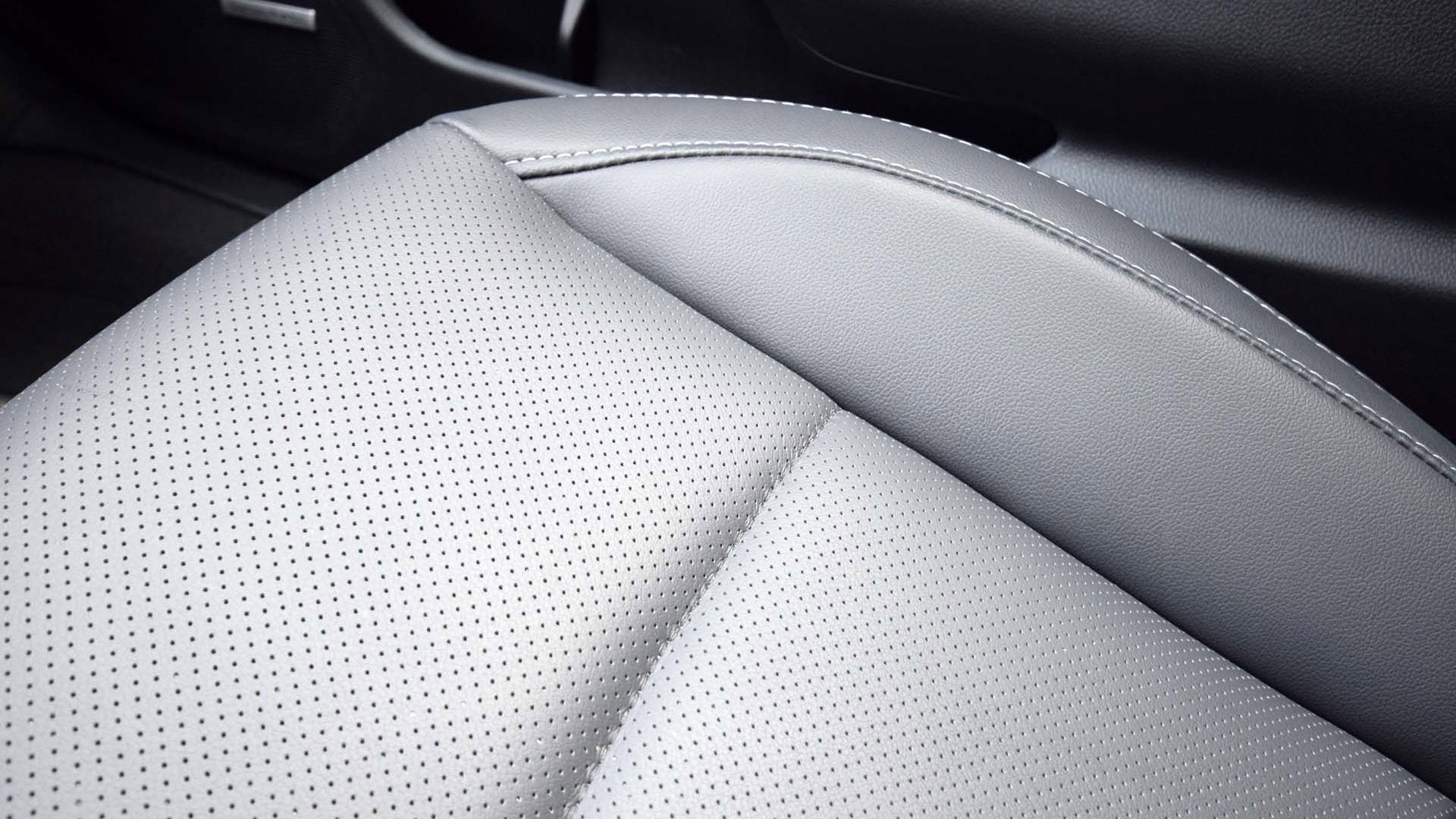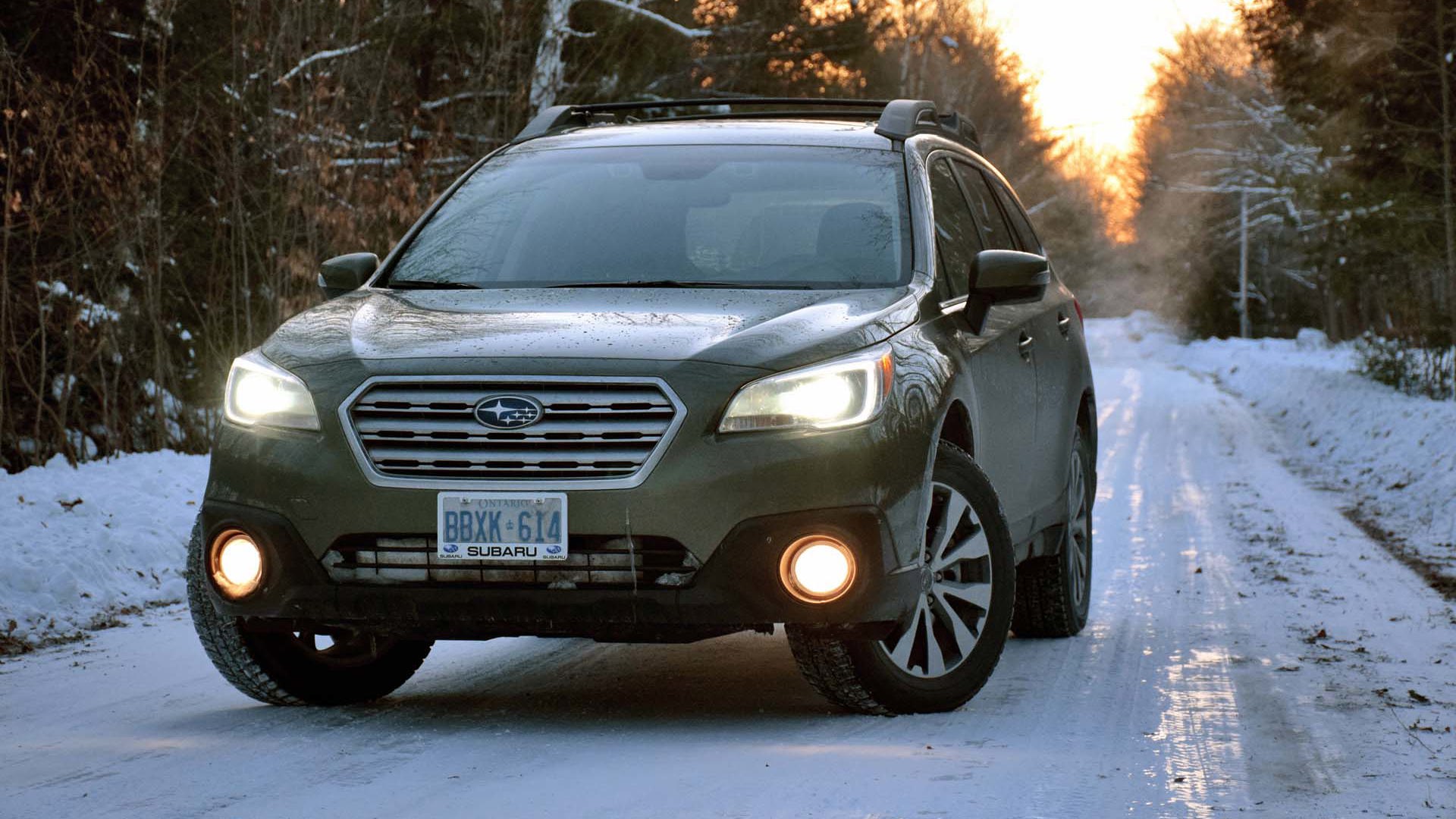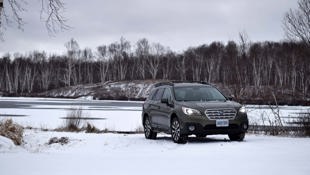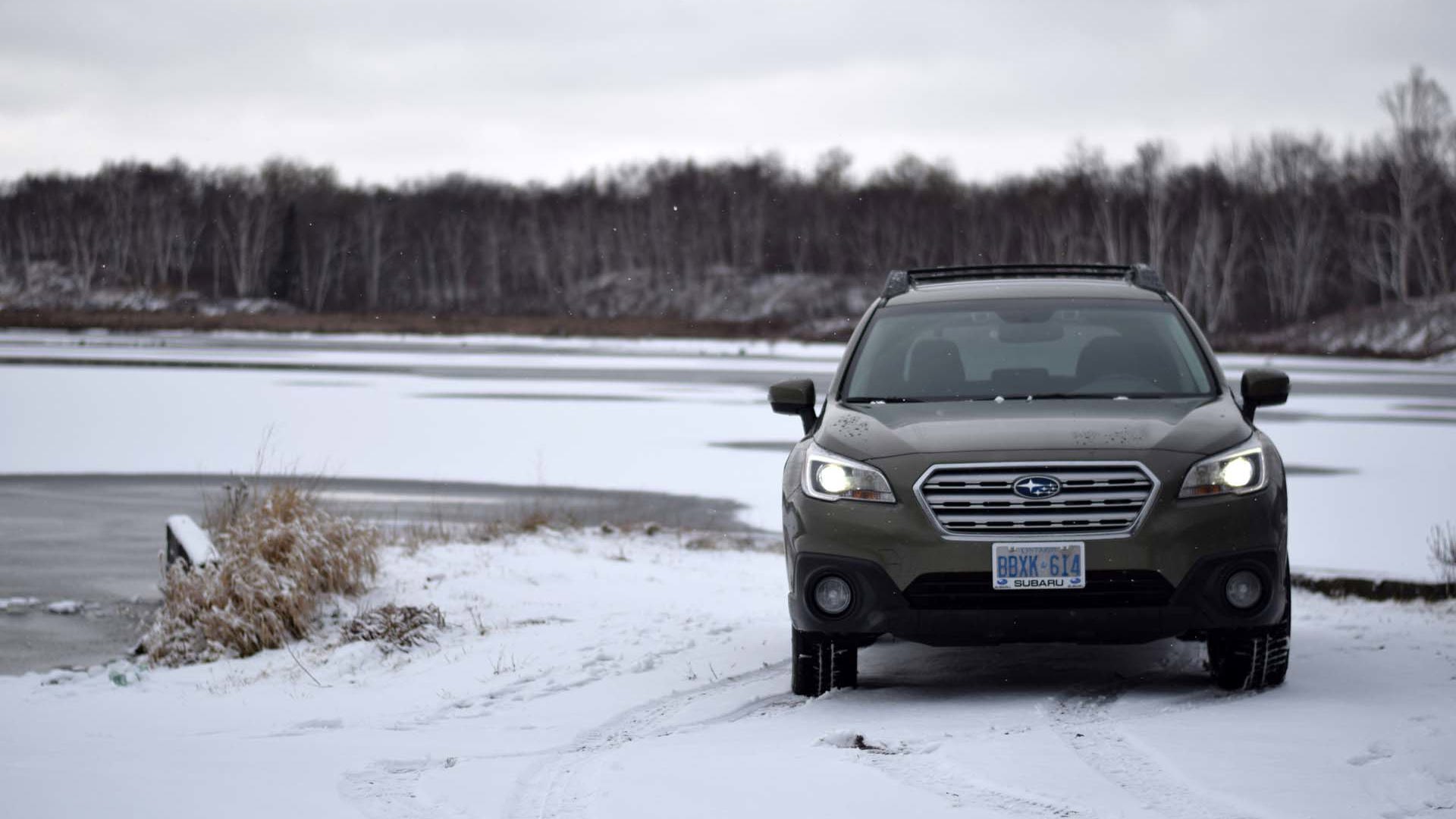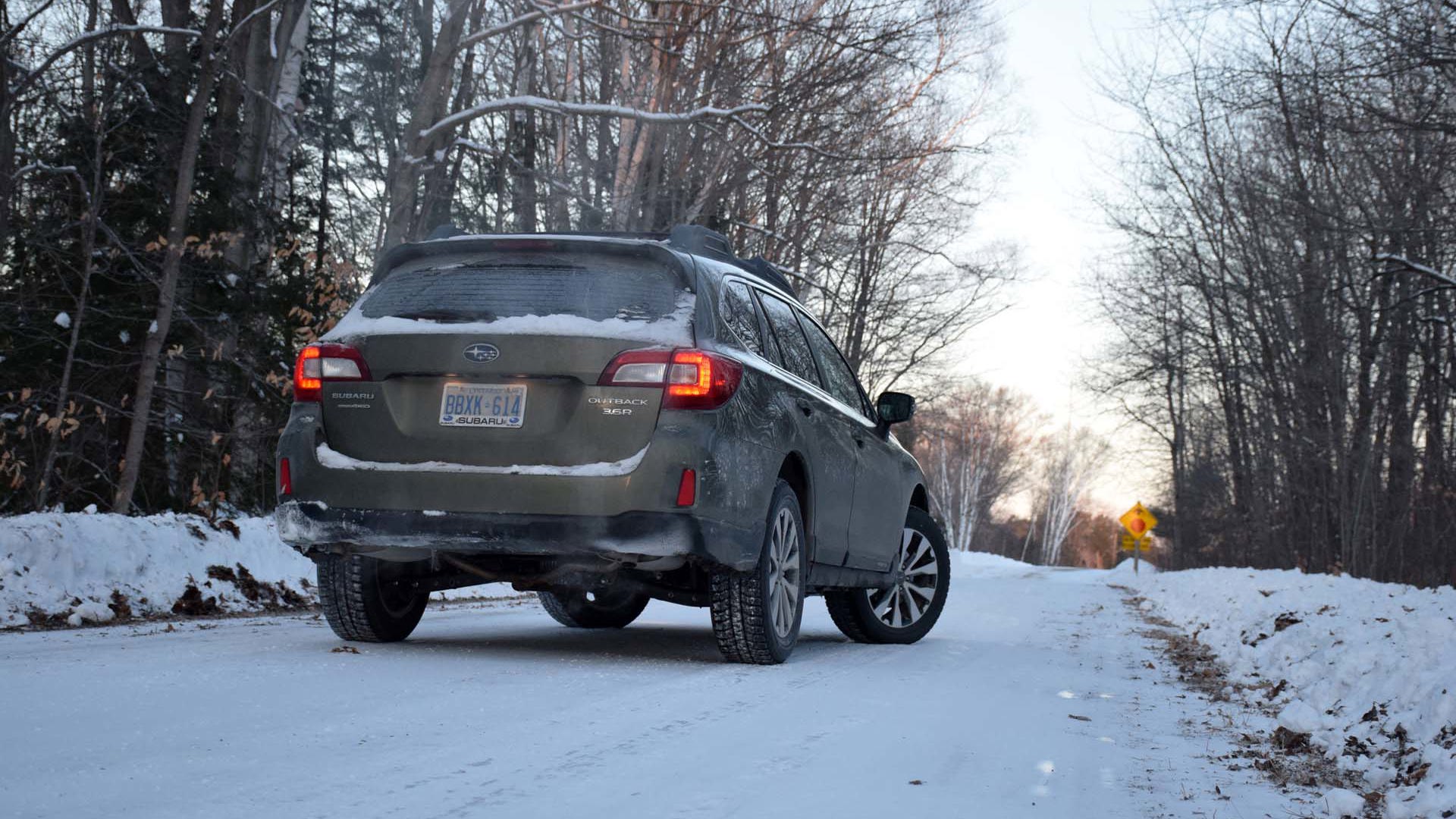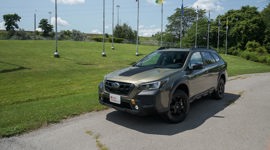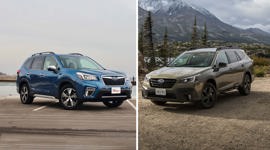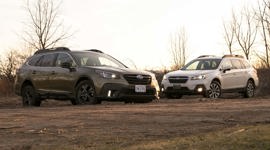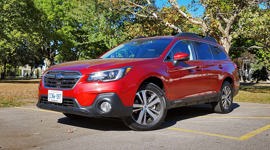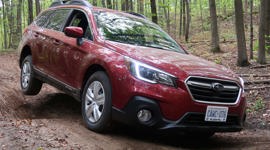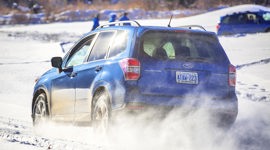 AutoTrader SCORE
AutoTrader SCORE
-
EXTERIOR STYLING6/10
-
INTERIOR8/10
-
PERFORMANCE8/10
-
COMFORT8/10
-
FUEL ECONOMY8/10
It’s Subaru’s rocket wagon!
It’s Subaru’s rocket wagon!
Give the Outback 3.6R’s throttle a smash, and it sails away from where it was with an instant helping of torque, strong pull through the rev-range, and a pleasing and tastefully-restrained growl.
The 256 hp from the big flat six seems a bit modest on paper, though the performance is pleasing. Add in the hair-trigger throttle and surprisingly responsive manual shifts via the steering-wheel mounted paddles, and you’ve got an effective invitation to some entertaining motoring.
Another effect of the big boxer’s low-end grunt is a sense of effortlessness during gentle operation. Just off idle, power is available in abundance, and the Outback 3.6R happily oozes through traffic with the lightest touch on the throttle, barely breaking 1,800 rpm. Expert tuning of the CVT transmission leaves it feeling so much like a conventional automatic that your writer thought it was, for the first few days of his test drive. Power is kept coming in a steady wave when requested, and cruising revs are very low. This is about as good as CVT transmissions get.
No manual is available with the big engine here, though various four-cylinder Outback models can be had with a stick, making it one of the only AWD/manual vehicles left in the utility world today, not to mention one of the only wagons left from a non-luxury brand, period. Most of these sell their wagons in a fairly fully-loaded guise to make it worth their while to take one off the shelf.
Taking a Legacy 3.6R Limited with Tech package off the shelf at your Subaru dealer will see owners parting with the better part of $40,200, though comfortable and spacious seating for four adults (five in a pinch), a handy, wide, square and easily accessed cargo hold, and some 2,075 L of cargo space are some of the rewards.
A slow-to-open but handy powered tailgate provides access to the cargo bay, which itself is basically a box: square, flat, wide and deep, and every inch of it usable. In fact, Outback will fit more of your stuff in its rear than, say, a Santa Fe Sport or Chevrolet Equinox.
Feature content abounds – high-end audio by Harman Kardon, xenon lights, touchscreen navigation, heated leather, dual-zone climate control, memory seating, push-button start and plenty more are all at your disposal. Ditto some classy LED approach lighting that picks up the keyfob and activates as you near the Outback at night.
Notable is the ride height: passengers enter with a sideways and downwards shift-and-plop into their seat. It’s car-like, and easy for small passengers, older, limited-mobility adults, and even smaller canines, who can jump in the back with ease. One (human) passenger, who recently underwent knee-replacement surgery, suggested that the wide door opening and seating position made it easy for him to board, swinging his hips and legs inside with minimal painful bending.
I noted no issues with headroom or legroom, front or rear. Rear seats are particularly generous, and your 5’11 writer could sit behind someone of the same proportions with inches to spare. Unless LeBron James was sitting up front, you won’t need to move the front seats ahead to fold the rear ones down, either.
Up front, look for cubbies, a deep bin, and two proper cupholders, as well as two USB ports, within the driver’s reach. The layout looks smart, tidy and upscale, though individual details fail to generate a completely cohesive look, taken as a whole. Mainly, this relates to a mish-mash of colours, fonts, on-screen display themes and trim materials, depending where you’re looking.
The tester included the EyeSight safety system, which gives the Outback the gift of self-awareness via a pair of cameras that let it see the world ahead in 3D, like a person. The system constantly analyzes the traffic situation ahead, and the Outback’s position between lane markings, and can alert drivers of a lane departure, self-steer to help magnetize the car to the centre of its lane, auto brake to prevent a low-speed collision, and even kill the throttle pedal should it be pressed while there’s a car in the way. Slight steering adjustments as you cruise the highway will become tiresome for some drivers, though this function can be turned off. As the cameras are tucked away safely behind the windshield, there are no external sensors to sign off when they get frosted with snow and ice. After 1,700 km at the wheel, your writer found the EyeSight system largely agreeable, effective, and consistent in its operation.
Ditto the All-Wheel Drive system, unsurprisingly. It feels totally invisible and seamless, both when driving gently and when challenged with severe tests, including coming to a full stop on a slippery hill and then carrying on. With the hill-hold system preventing roll-back, Outback has minimal problem regaining momentum without spinning its wheels at 276 miles per hour like a chump, if it even spins its wheels at all.
Drive it harder, and Outback’s systems work keep it going exactly where its pointed: this isn’t a slippery, sliding, tail-happy drift-wagon, instead preferring to lock, with all four wheels, directly towards the heading specified by the driver. For those prioritizing absolute traction in the snow over feats of sideways monkey business, it’s an ideal setup. If you’re interested, a little Scandinavian flicking, gently executed, gets the long and front-heavy Outback gently sideways, even more so with a well-timed glance of the brake pedal. The stability control system is tuned nicely, allowing slight slips and slides to pass unhindered, and clobbering bigger traction losses quickly and effectively.
The tester wore a set of Blizzak winter tires, giving all of the above-mentioned systems more grip to work with, and impressive slippery-surface bite under braking. Add in the backwoodsy ground clearance, and you’ve got a recipe for unstoppable confidence, even in the sort of weather that makes many would-be motorists hide under a warm snuggie with a box of macaroons.
An added note: your writer spent an evening making numerous passes of an un-plowed camp road just hours after knee-deep snow fell on his locale. This situation sees the Outback, at times, using most of its power just to maintain forward momentum, but other than sometimes-wet and snow-packed brakes, the tester pulled through this very challenging drive with confidence to spare. Even when plowing hood-deep snow, the well-tuned stability control system and extra helping of flat-six power, and especially the traction with the Blizzak tires mounted, help keep things moving with peace of mind.
It’s perhaps what you don’t feel in this sort of situation that impresses most. The ESC, presumably considering your current speed, throttle position and maybe even how hard it’s been working recently, never clamps down too hard unless you’ve completely mucked things up. Steering doesn’t go limp and lifeless in deep snow. And (thanks to the tires) you never feel that helpless buzz through the pedal when it’s time to stop suddenly, and each click and pulse of the ABS system feeling like its contributing to getting you stationary. Stop in deep powder, and you virtually never slip a wheel when taking off again, so there’s less digging into the snow, and more clawing and scraping though, it instead.
On clear highways, the ride feels dense, solid and largely comfortable, with suspension set in a softly-springy calibration that’s welcomed for hours of long-haul comfort, but with a touch of sportiness around the edges for good measure. Noise levels are kept in check, though the roof-mounted cross bars howl away a little if cruising speeds lands too far north of 100 km/h.
Further, test drivers can expect a steadiness and stability when pushing the Outback a little – suddenly jumping off of the throttle, planting the throttle out of a ramp or some mid-corner surprise-braking all see the Outback stay flat and true, never lurching or shifting about beyond a slight squirm, even on snow. It’s not a corner-carving weapon designed to remodel your spleen with G-forces, though Outback rarely feels bothered when driven hard.
One cross shopping exercise very worth mentioning, here. At the tester’s price, and depending on prioritized features and equipment, shoppers can get into an Infiniti QX50, complete with a friskier AWD system, 70 more horsepower, and a similarly lean and wagon-like approach to hauling people and gear around. The Infiniti is heavier on fuel and lighter on cargo capacity, though it may make a better choice for the enthusiast driver, since it winds out to 7,500 rpm and goes like bananas.
Ultimately, where priorities centre around space, uniqueness, expertly-tuned winter driving dynamics and that gleaming brand reputation for all things safe and sensible are concerned, the Outback 3.6R should be considered a priority test drive. Then, get yourself some decent winter rubber and go find yourself a blizzard.
| Warranty: 3 years/60,000 km; 5 years/100,000 km powertrain; 5 years/unlimited distance corrosion perforation; 3 years/unlimited distance roadside assistance Competitors: |
| Model Tested | 2016 Subaru Outback 3.6R Tech Package |
|---|---|
| Base Price | $40,195 |
| A/C Tax | $100 |
| Destination Fee | $1,675 |
| Price as Tested | $41,970 |
|
Optional Equipment
None
|
|
